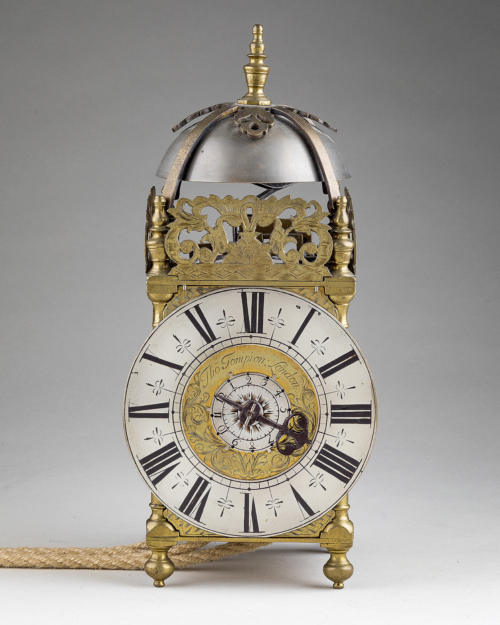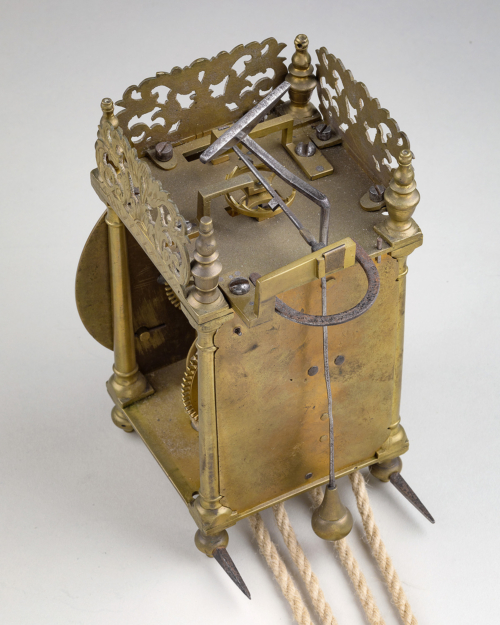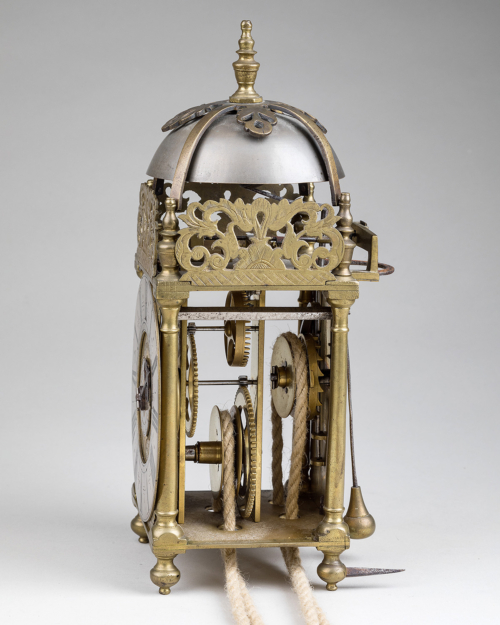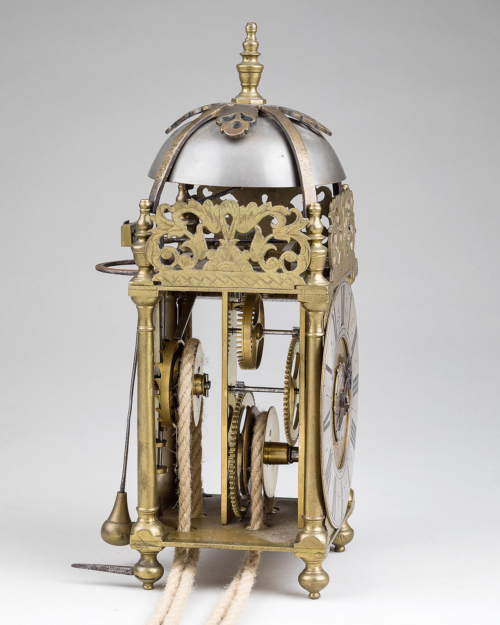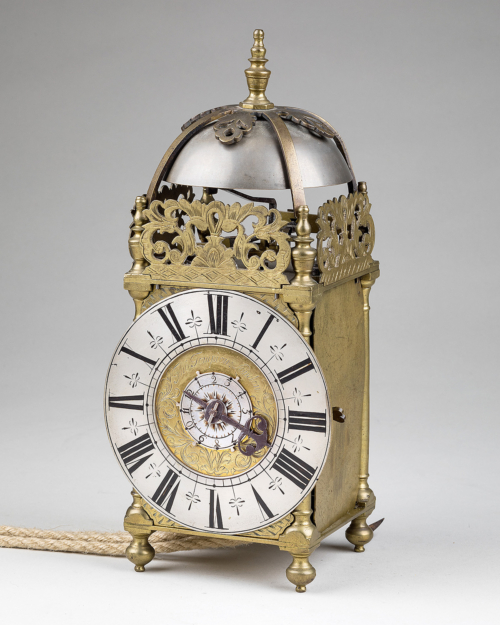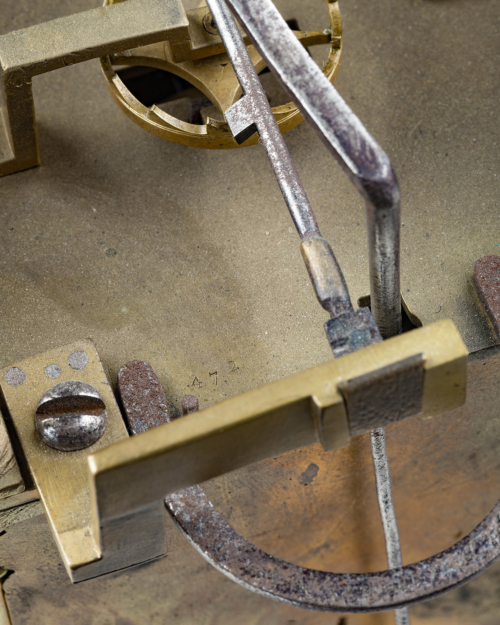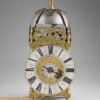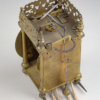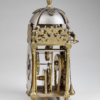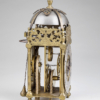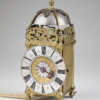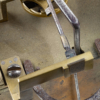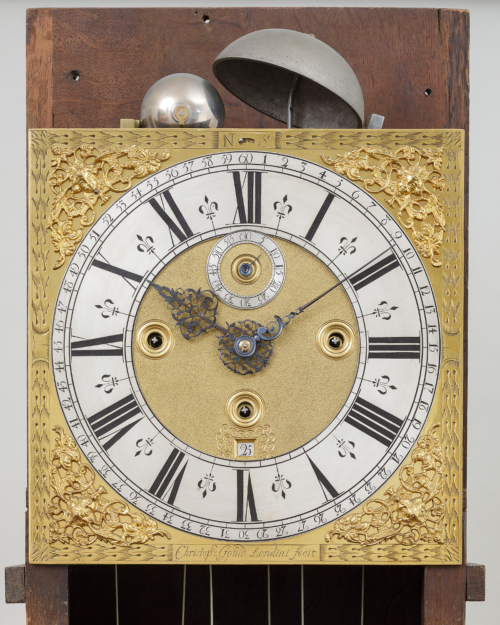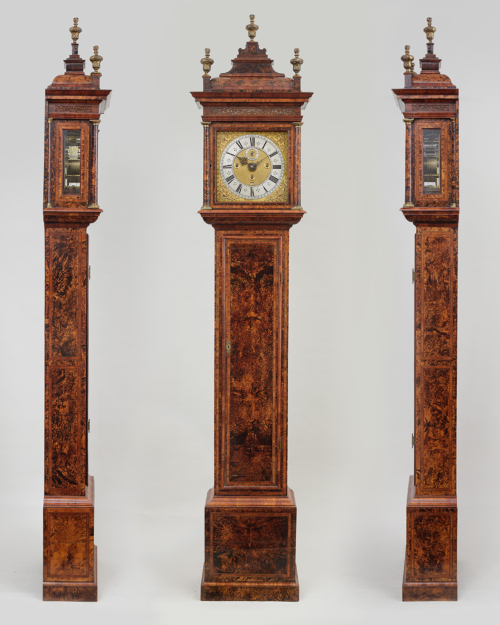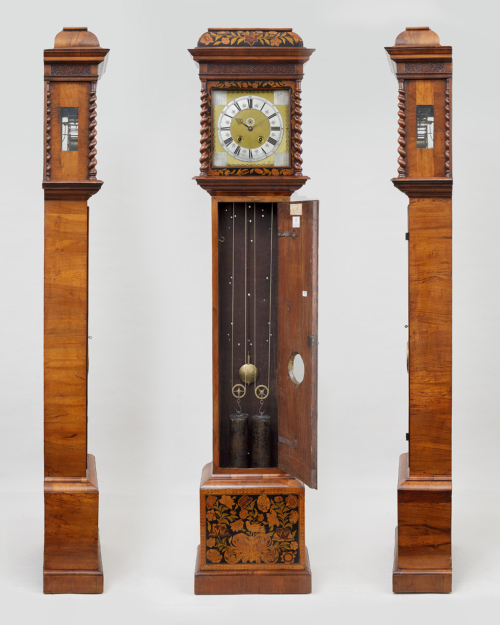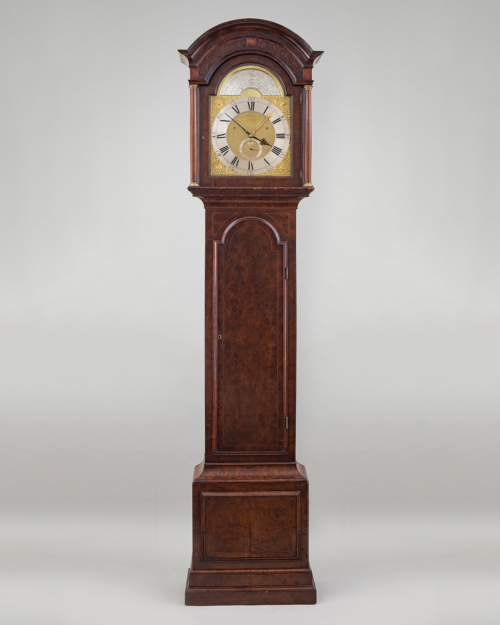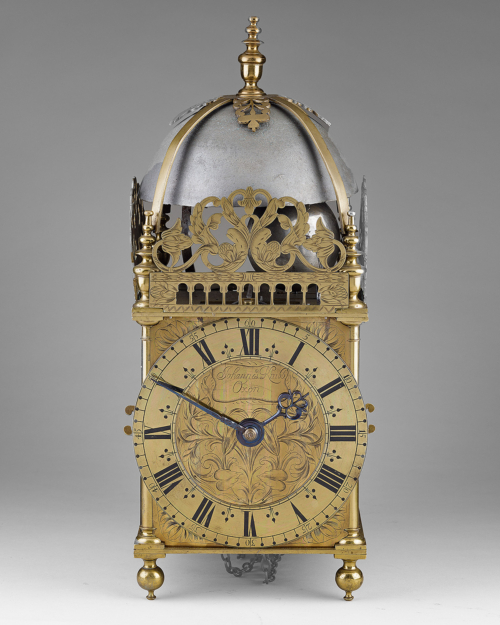| Height | 9¼ inches (235 mm) |
| Case | Of Tompion’s standard lantern construction with circular section columns, ball feet and urn finials. The brass side doors, opening and detachable, the rear with brass cover-plate. Pierced gallery frets screw-fixed to the front and sides, the front fret enhanced with engraved foliage. The four-legged brass bell strap with pierced decoration between, pinned to the post finials, the bell held by a further urn finial above. The top plate applied with an iron hoop and punch numbered 472 at the back, the two rear ball feet with matching iron spurs. |
| Dial | Signed Tho Tompion London below XII in a downward curve in the foliate engraved centre (engraver G.195) and with a central silvered alarm disc, the 4¼ inch silvered Roman chapter ring has sword-hilt half hour marks and an inner quarter division ring. The alarm is set against the tail of the single blued-steel hand. |
| Movement | The posted frame movement, going train with knife-edge verge escapement and bob pendulum, the alarm train mounted vertically on the inside of the rear brass cover-plate with a verge clapper to the bell above, both going and alarm trains are rope driven. |
| Duration | 30 Hour |
| Provenance | Private collection Louvain, Belgium, 2003; |
| Literature | Antiquarian Horology, March 2003, Bobinet advert; |
| Escapement | Knife-edge verge with short bob pendulum |
| Strike Type | Alarm only |
| Exhibited | 2019-2020, Edinburgh, Nat. Museum of Scotland, The Luxury of Time, cat no.4:3 |
Exhibit № 37. The Louvain Tompion No.472, Circa 1708
A rare Queen Anne miniature brass lantern timepiece with alarm by Thomas Tompion, London
Sold
By the time Tompion started numbering his clocks in c.1682, he was batch making, but also catering for his customers’ needs by finishing to order (Thomas Tompion 300 Years, p.140-153). Unlike Daniel Quare, as a rule of thumb, Tompion was not ordering clocks from other makers.
Even for his grandest clients there was a requirement for more simple timekeepers in the servants’ quarters of their large houses, and it is noteworthy that his output of 30-hour clocks was so limited after he started numbering. However in 1701, a bill survives that shows he supplied a 30 Houre clock in a black Case to Robert Harley (later 1st Earl of Oxford), probably for the ‘back stairs’ with a standard sized posted frame movement. However, no authenticated standard sized lantern clocks are currently known to survive.
Although he made a small quantity of 30-hour clocks earlier in his career, Tompion’s first surviving examples in his number series are the only two miniature hooded wall clocks recorded, no.392 and 419 of circa 1703 and 1705. The first was most probably a special order and, as was his modus operandi, the posted frame castings were ordered in quantity, setting the frame pattern for his small series of miniature lantern clocks that followed.
There are only 9 substantiated Tompion lantern clocks; all are miniatures and date from 1706 to his death in 1713, the earliest no.433, the latest no.547. All incorporate the same castings and the earlier examples have a riveted iron suspension hoop. From c. 1710, Tompion introduced a single cast top-plate incorporating an integral hoop, a practice continued by Graham.
Product Description
By the time Tompion started numbering his clocks in c.1682, he was batch making, but also catering for his customers’ needs by finishing to order (Thomas Tompion 300 Years, p.140-153). Unlike Daniel Quare, as a rule of thumb, Tompion was not ordering clocks from other makers.
Even for his grandest clients there was a requirement for more simple timekeepers in the servants’ quarters of their large houses, and it is noteworthy that his output of 30-hour clocks was so limited after he started numbering. However in 1701, a bill survives that shows he supplied a 30 Houre clock in a black Case to Robert Harley (later 1st Earl of Oxford), probably for the ‘back stairs’ with a standard sized posted frame movement. However, no authenticated standard sized lantern clocks are currently known to survive.
Although he made a small quantity of 30-hour clocks earlier in his career, Tompion’s first surviving examples in his number series are the only two miniature hooded wall clocks recorded, no.392 and 419 of circa 1703 and 1705. The first was most probably a special order and, as was his modus operandi, the posted frame castings were ordered in quantity, setting the frame pattern for his small series of miniature lantern clocks that followed.
There are only 9 substantiated Tompion lantern clocks; all are miniatures and date from 1706 to his death in 1713, the earliest no.433, the latest no.547. All incorporate the same castings and the earlier examples have a riveted iron suspension hoop. From c. 1710, Tompion introduced a single cast top-plate incorporating an integral hoop, a practice continued by Graham.
Additional information
| Dimensions | 5827373 cm |
|---|

